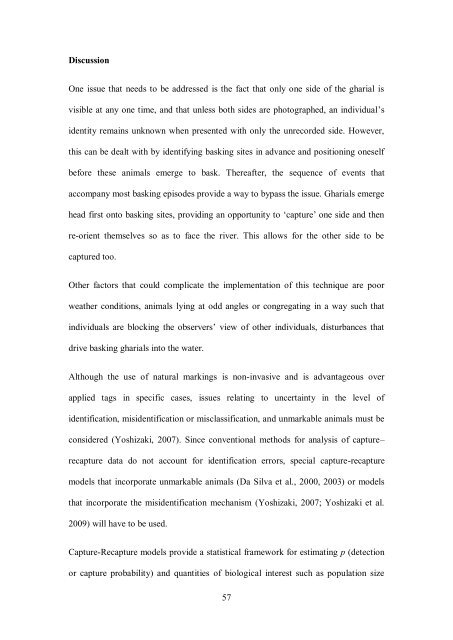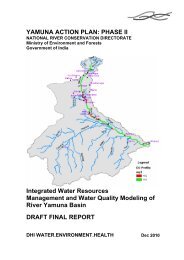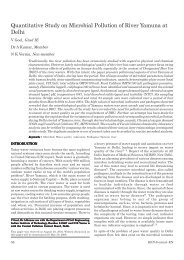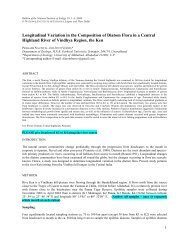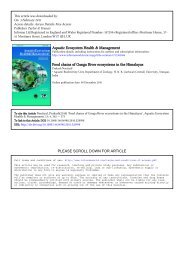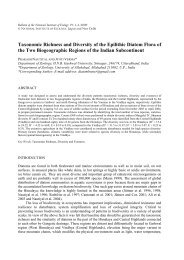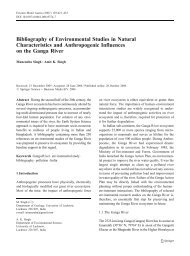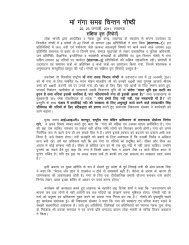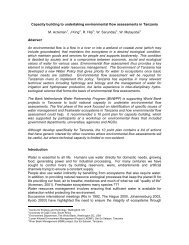Ecological and anthropogenic covariates ... - GANGAPEDIA
Ecological and anthropogenic covariates ... - GANGAPEDIA
Ecological and anthropogenic covariates ... - GANGAPEDIA
You also want an ePaper? Increase the reach of your titles
YUMPU automatically turns print PDFs into web optimized ePapers that Google loves.
Discussion<br />
One issue that needs to be addressed is the fact that only one side of the gharial is<br />
visible at any one time, <strong>and</strong> that unless both sides are photographed, an individual’s<br />
identity remains unknown when presented with only the unrecorded side. However,<br />
this can be dealt with by identifying basking sites in advance <strong>and</strong> positioning oneself<br />
before these animals emerge to bask. Thereafter, the sequence of events that<br />
accompany most basking episodes provide a way to bypass the issue. Gharials emerge<br />
head first onto basking sites, providing an opportunity to ‘capture’ one side <strong>and</strong> then<br />
re-orient themselves so as to face the river. This allows for the other side to be<br />
captured too.<br />
Other factors that could complicate the implementation of this technique are poor<br />
weather conditions, animals lying at odd angles or congregating in a way such that<br />
individuals are blocking the observers’ view of other individuals, disturbances that<br />
drive basking gharials into the water.<br />
Although the use of natural markings is non-invasive <strong>and</strong> is advantageous over<br />
applied tags in specific cases, issues relating to uncertainty in the level of<br />
identification, misidentification or misclassification, <strong>and</strong> unmarkable animals must be<br />
considered (Yoshizaki, 2007). Since conventional methods for analysis of capture–<br />
recapture data do not account for identification errors, special capture-recapture<br />
models that incorporate unmarkable animals (Da Silva et al., 2000, 2003) or models<br />
that incorporate the misidentification mechanism (Yoshizaki, 2007; Yoshizaki et al.<br />
2009) will have to be used.<br />
Capture-Recapture models provide a statistical framework for estimating p (detection<br />
or capture probability) <strong>and</strong> quantities of biological interest such as population size<br />
57


